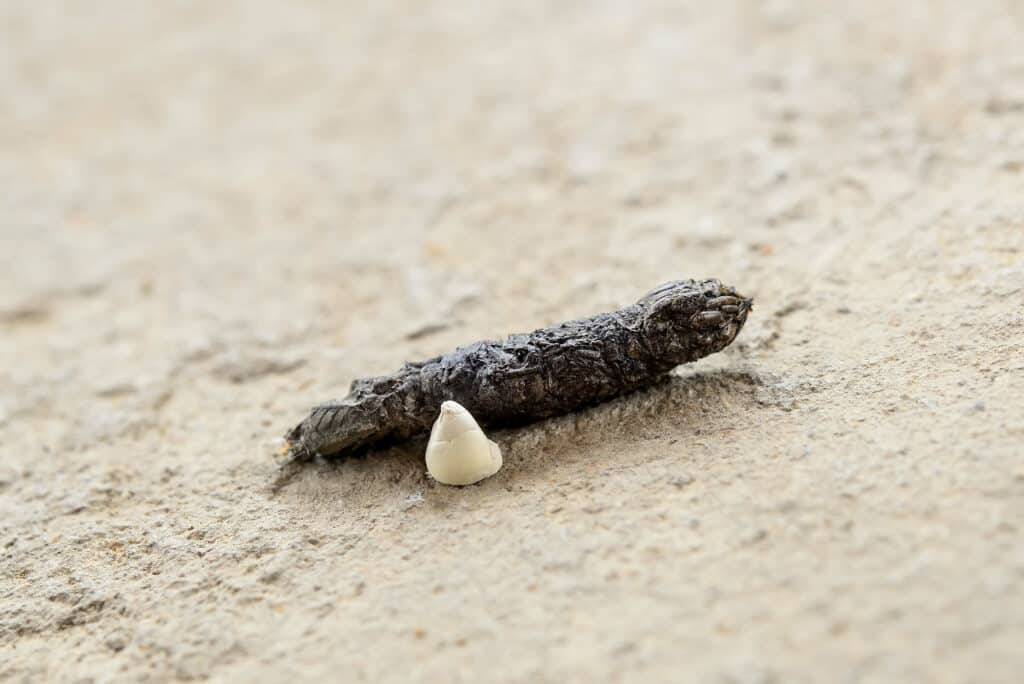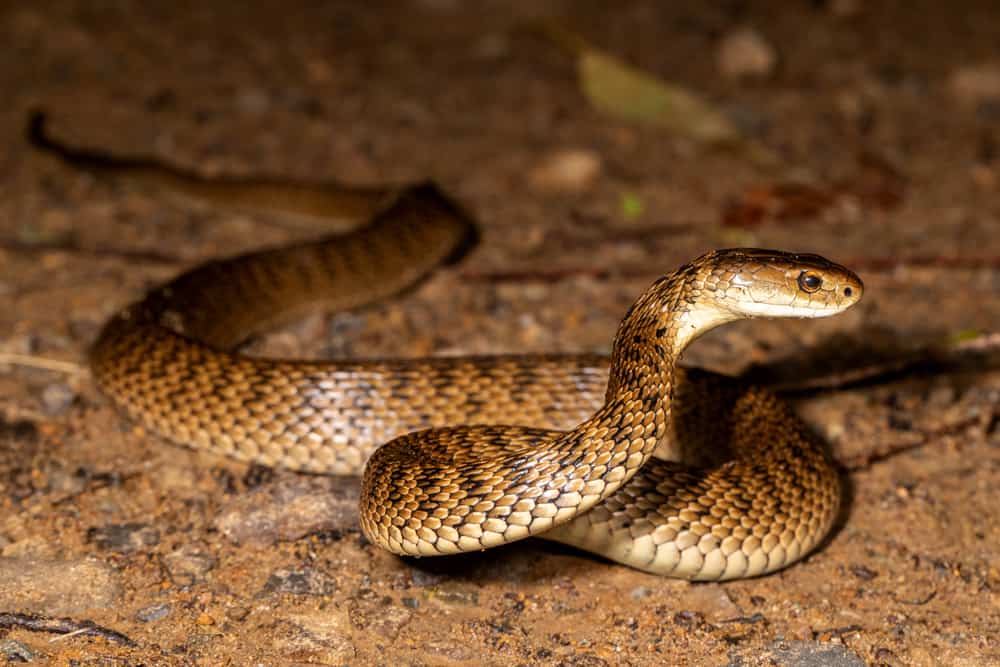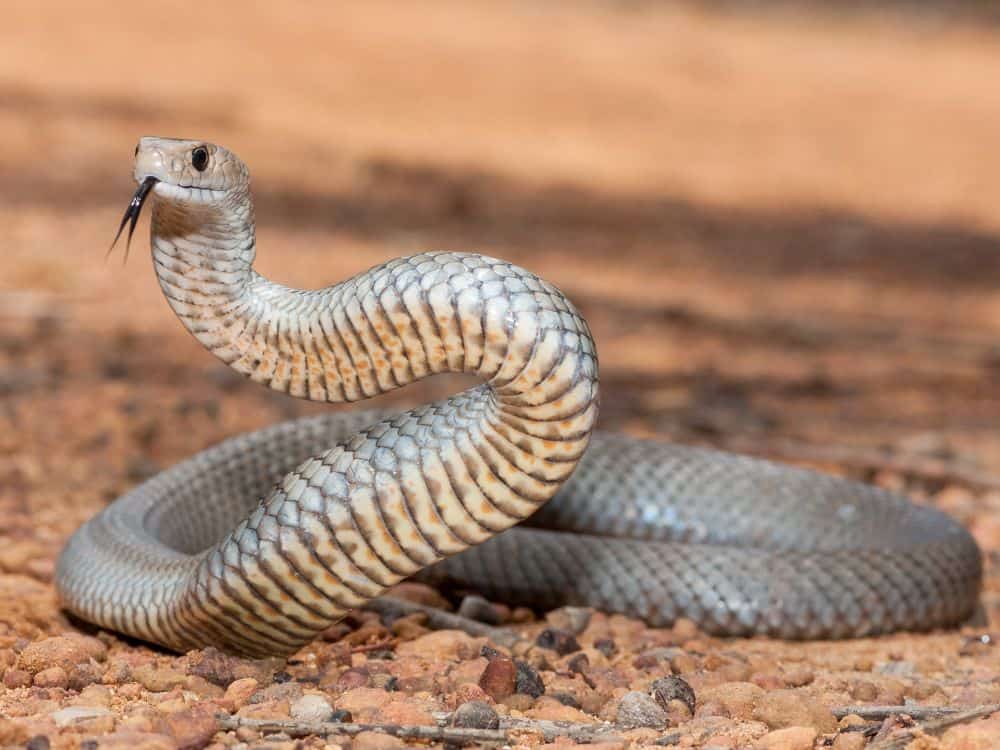When it comes to poop, most people recognize that most animals will have some kind of excrement. But, snakes and legless lizards are a bit different. You might not know where the poop comes out, if snake feces are even a thing, or how to spot it in a pet snake’s cage?
Whether you just want to find out if your snakes recently took a trip to the bathroom or just need to figure out what left droppings in your shoe, it’s a good idea to know what snake poop looks like. We have the explanation as well as some interesting (and useful) snake facts.
Do snakes poop?
Yes, snakes poop just like any other animal you’ll see. Many people assume that they regurgitate their droppings due to the fact that they don’t look like they have butts. However, they do poop, just like most other reptiles.
How do snakes poop?
Snakes do not have an anus and a urethra like most other mammals. Rather, they have a single body part named a cloaca that lets them urinate, defecate, and also mate. So, after they digest their prey, their droppings get pushed out of their intestines.
In most cases, you won’t see a snake’s cloaca unless they are mating or trying to push out bowel movements. It’s a small slit (or dip) in the snake’s lower body close to the tail. It connects to their bowels.
How often do snakes poop?
The frequency that a snake poops isn’t a genus-wide thing. It’s actually more of a species-oriented thing. A large snake like a python or an anaconda may defecate after three meals or more, especially if the meals are small.
Meanwhile, a small snake like a corn snake won’t have the capacity to wait to poop for so long. As a result, small snakes like corn snakes will probably poop after every single meal.
NOTE: If you have a pet snake, you need to check your pet’s tank for snake excrement. If your snake hasn’t pooped in a long time, you may want to check for constipation. Snakes can get stomach sicknesses too.
What does snake poop look like?

Snake droppings look a lot like small animal droppings of most other types. The droppings are tubular, dark brown or almost black, often topped or punctuated with a white urea cap that looks like bird poop or chalk. They are tubular, but will still have small lumps in them.
In other words, it’s a stinky log shape that’s dark brown and black, with a white tip.
The size of the poop can change, depending on the species type. Very small snakes may have poop that resembles bird poop due to the small size. Try not to get confused! If you are unsure of whether you have birds or snakes in your home, keep an eye out for signs of both.
Exterminators often look for the white tip or surrounding liquid to determine if it’s snake poop. The white tip of the snake droppings is known as a urea cap, and it’s dried up liquid that was found in the urine of the snake.
Like most other animal droppings, you may occasionally see bones or even scales inside the poop. What the poop contains depends on the type of animals the snake eats. If you see scales in it, you
If the snake eats reptiles or other snakes, you will see scales. Coral snakes, for example, will poop out scales of the snakes they ate. On the other hand, if the snake in question eats rats or other small mammals, you will likely see bones or even bits of fur in it.
What does snake pee look like?
You may have noticed that you haven’t ever seen a snake pee. This is actually by design. That white cap on their poop is the urine the snake has expelled. It all comes out in a single moment, with urine being the white or liquid portion.
With that said, snake urine is not quite like regular pee. Sometimes, snake pee will have small lumps and clumps in it along with its unusual white hue. These lumps are compounds in the urine called urates.
What should you do if you think you see snake poop?
First, if you have a pet snake, you should feel relieved that your snake is capable of relieving itself or herself. However, we’re going to assume that you are not a pet owner in this article simply because this isn’t a question a snake owner would typically ask.
If you believe that you see snake poop, you have to think about where you saw it. If you saw a large snake dropping in the woods, it may mean that you are near a den of snakes or that a snake just had to “pass through” the area. Either way, you may want to watch where you step.
On the other hand, if you found snake poop in your home, now would be a moment to get a bit worried. Snakes are not like other wildlife pests. If they take hold in your house, they can pose a risk to your health as well as the safety of your family members and pets.
Depending on the snake species, you could be dealing with a venomous snake infestation. Calling Animal Control or an exterminator to take a look at your home. This is a dangerous issue and should be addressed immediately.
Where would snakes hide in a home?
Snakes tend to like crawlspaces, basements, and attics. They adore corners and nooks where they can safely nest. In many cases, they may find themselves behind walls, between joists, and more.
How do you clean up snake poop?
If you have a pet snake, just shovel it out of your snake’s terrarium, place it in a plastic bag, and toss it out. If you find snake poop in random parts of your home, use the instructions given below:
- Wear protective gloves first. Snake poop contains parasites and salmonella bacteria that can get you and your pets sick. Do not touch it bare-handed, as this can actually transmit diseases to you.
- Grab the poop and place it in a plastic bag. Tie up the plastic bag and throw it in the trash if the poop was found indoors. There is no need to secure the trash, since snakes have no interest in chewing on plastic—unlike mice or raccoons.
- If the poop is outdoors, use a shovel to scoop up the area underneath the poopy area and place it in the plastic bag. At this point, you can tie up the bag and toss it in the trash. Outdoor poops are easy to clean in this manner.
- If the poop was indoors, clean the area where you found the poop as well. Use a bleach or antibacterial spray to sanitize the area. This can help reduce the spread of diseases caused by wild snake poop.
- Wash your hands and the surface of the gloves off. Antibacterial soap will work best here and will ensure that you can rest easy about any sort of disease transmission. You can never be too safe here!
PRO TIP – If you find large snake droppings in your backyard, do not leave your pets alone outside until you have spoken to an exterminator and Animal Control. Copperheads and other venomous snakes can leave large droppings.
Is snake poop dangerous?
Snake excrement is fairly dangerous, especially if the snakes in question are not part of your family. Snakes eat mice and other parasite-bearing animals that could pass their diseases onto you through the snake’s poop.
Because it can be disease-ridden and parasite-ridden, you should always make a point of cleaning and sanitizing the surfaces the poop was found on. This is also why you need to wear gloves when handling it.
If you found poop outside, do not allow your pets to go outside unmonitored and use parasite-prevention medication on your pets. You don’t want them to get sick, and you definitely don’t want them to get bitten by a snake!
Even if the snake is your pet, you should still treat its droppings like a biohazard. Those rodents they eat may be marked as safe, but you still may get salmonella from your pet if you aren’t careful. No pet is totally parasite-proof or disease-proof.
In conclusion
Snakes can poop, and when they do, it looks like a brown, bumpy log with a white tip. These droppings can be large or small depending on the species of snake. As long as you clean it up and address any issues that come up with the sightings of poop, you should be okay.
As always, avoid touching any unknown animals you find.

